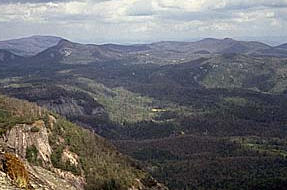News Releases from Region 02
EPA and New York Partner to Control and Monitor Air Pollution
(New York, N.Y. – August 1, 2018) As part of its work with states to improve air quality, the U.S. Environmental Protection Agency (EPA) intends to provide the New York State Department of Environmental Conservation (NYSDEC) with more than $7 million to support the state’s air pollution control and air monitoring programs after all requirements of the grants program are completed. This funding will help New York in its efforts to meet the national air quality standards and protect air quality and people’s health.
“This funding allows us to continue working with our state partner to monitor and further improve air quality by reducing harmful air pollutants throughout New York,” said EPA Regional Administrator Pete Lopez. “We can achieve our best environmental results working with our state partners and supporting their continuing efforts.”
$7,000,000 for Air Pollution Control Program Support
EPA intends to provide NYSDEC with $7 million to assist in its efforts to implement air pollution control programs throughout New York. These programs include:
- Developing and implementing regulations for stationary sources of air pollution, such as factories, refineries, boilers, and power plants;
- Updating regulations for mobile sources of air pollution, such as cars, commercial trucks, aircrafts, marine vessels, and heavy equipment;
- Improving emissions data and modeling; and
- Operating a monitoring network.
$95,000 for PM 2.5 Ambient Air Monitoring Network
This grant, awarded on July 16, 2018, will help NYSDEC operate and maintain a network to monitor air for very fine particulate pollution, known as PM 2.5. Data on PM 2.5 is used to gauge whether areas of New York meet federal air quality standards for PM 2.5. PM 2.5, fine, inhalable particles with diameters that are generally 2.5 micrometers and smaller, is composed of potentially harmful microscopic solids and liquid droplets suspended in air that can get deep into your lungs or into your bloodstream. Particle pollution exposure can worsen heart and lung diseases, and has been linked to effects such as cardiovascular symptoms, heart attacks, asthma attacks, and bronchitis, and even premature death from heart or lung disease. Children, older adults, and those with breathing or heart problems are especially vulnerable to these effects.

Adirondack mountains, New York. Photo courtesy of the U.S. EPA.
Background:
EPA’s most recent air trends report highlights that, between 1970 and 2017, the combined emissions of six key pollutants dropped by 73 percent, while the U.S. economy grew more than three times. A closer look at more recent progress shows that between 1990 and 2017, average concentrations of harmful air pollutants decreased significantly across our nation:
- Sulfur dioxide (1-hour) ↓ 88 percent
- Lead (3-month average) ↓80 percent
- Carbon monoxide (8-hour) ↓ 77 percent
- Nitrogen dioxide (annual) ↓ 56 percent
- Fine Particulate Matter (24-hour) ↓ 40 percent
- Coarse Particulate Matter (24-hour) ↓ 34 percent and
- Ground-level ozone (8-hour) ↓ 22 percent
EPA continues to work with states, local governments, tribes, and citizens – to further improve air quality across for all Americans.
The report includes interactive graphics that enable citizens, policymakers, and stakeholders to view and download detailed information by pollutant, geographic location, and year. Explore the report and download graphics and data here: https://gispub.epa.gov/air/trendsreport/2018/
For more information about particulate pollution and PM 2.5, visit https://www.epa.gov/pm-pollution.
For more information about New York State’s Air Pollution Control Program, visit https://www.dec.ny.gov/chemical/281.html
Follow EPA Region 2 on Twitter at http://twitter.com/eparegion2 and visit our Facebook page,
http://facebook.com/eparegion2.
18-054 # # #

